Yesterday was one of those days where I simply could not get motivated to go find something interesting to look at. So I stopped at Woolies for some groceries after a morning run around Carlton Gardens, spent some time planning and booking interesting things to go and see other days, washed my clothes and discovered The Crown on Netflix. It was lovely.
And today I walked over to the Immigration Museum and spent a couple of hours learning about how Australia (not unlike America) became a nation of immigrants. As a matter of fact, by 2001, only 1/4 of the population of Australia (23 million) was born here. I wonder if we know that stat for the U.S. Without going into detail, which of course I could do — I did take notes, but wouldn’t want to spoil it for those of you who might want to visit the exhibit on your own… the policies of Australia over the decades are as ever-changing as our own. So, a summary. Just because.
The first convicts were sent to New South Wales in 1788. That’s the year that many consider the first colonization of Australia by Britain. In the 1820’s some of those people began traveling overland to other parts of the country, and by 1830 an illegal deal for land in Port Phillip (Melbourne) was undertaken by a couple Brits from Tasmania — the lead one’s name was Batman. In the 1840’s the first non-British immigrant ship arrives — from Germany, and in 1852 the convict shipments stopped. Instead, they start sending orphan young women to be wives of the convicts that had decided to stay. Lovely. Until 1900 it was British policy that governed the Australian colonies, but slowly the colonies begin to put in place their own regulations — gold had been discovered and wool exports were huge and suddenly there was money to be made.
The next era was after Australia become a federated commonwealth in 1901. The Immigration Restriction Act was introduced which included a dictation test, which made it easier to exclude non-British (e.g. Chinese) immigrants. That was the official name for the Act. It was commonly referred to at the “White Australian Policy” and there was even a national anthem to support it. Here are two lines of lyrics from that song: “Our Northern Territory no longer is to be the open gate of coloured immigration. This continent of ours is now a white man’s land and not for alien surplus population.” Really. Those were the lyrics. Hum a few bars and tap your feet and lock your doors and load your guns. Seriously.
After 1945, the country realized that it was necessary to allow more people in to ensure that Australia could continue to grow and become a player on the world stage. WWII taught them that. So the immigration policy no longer mentions race, although those from Britain are still preferred, and it was okay if you were from continental Europe. It was a push for population growth.
From 1973 to today the policy is broad, and people from all countries may apply. No longer predominantly white and British, Australians began to see their nation as culturally diverse, which challenged the idea of a single, racially-based national identity for Australia. There’s been a political and social shift towards multiculturalism, but national identity continues to be debated. Some Australians remain fearful of immigration from non-European countries.
I watched a film that talked about the many reasons that people emigrate from their home countries — natural disasters, war and conflict, reuniting with family, a better life, freedom. And then there was a “fake” interview with an Iraqi who was asked questions by a faceless agent, and at the end of each section, the viewer was meant to rate his answers — good, fair, bad. Then decide whether to admit the person. What struck me about this “fake” intake session was the expectation from the agent that the person (who in this case was fleeing Iraq because his family was persecuted, dad was executed etc), that the applicant would have family history with very specific dates. Families are fleeing war and persecution and need to have papers proving what year they graduated from university, and the specific dates that family members crossed a border into Turkey. And having watched the images of the waves of migrants across Europe and in rickety boats from Myanmar I simply can’t imagine that having a lock box of certificates and papers is really even possible. The woman I was watching this video with told me that her husband had been kidnapped during the same time period (first Gulf War) as this applicant — he escaped after several weeks. We both opted to let this guy in. The agent came on screen and told us we were wrong. Rejected.
I guess the point is that this museum and exhibit reinforced the struggles for millions of people around the globe trying to escape and provide and simply live in a safe place. There is no easy answer I know, but the policies and “white America” sense that seems to pervade the current administration simply goes against all recognition of human rights. #resist
Whew!
Then I met my sister and she taught me how to take the tram and we went to St. Kilda — end of the line at the beach. And after some wine and a stroll we glimpsed one little penguin nesting in the rocks, waiting for his tribe to join him at sunset. Back on the tram and walk through the Friday night streets and some very interesting street views — love the building with the tree growing out of the 10th floor!
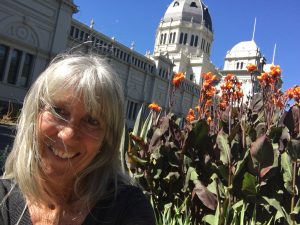
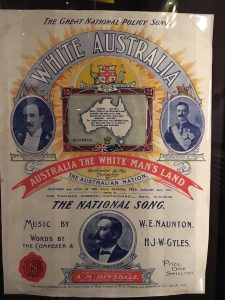
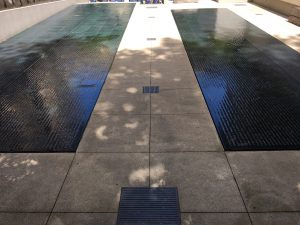
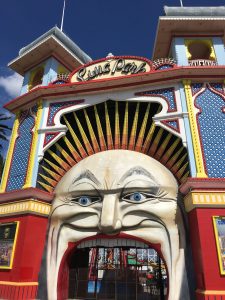
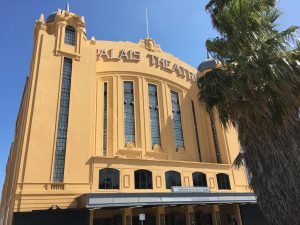
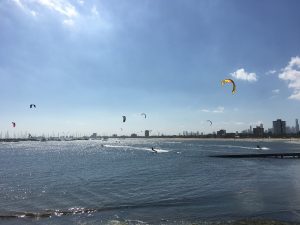
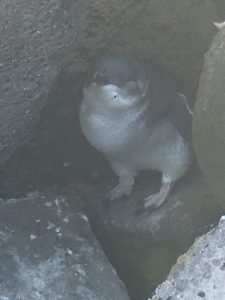
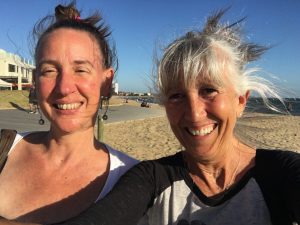
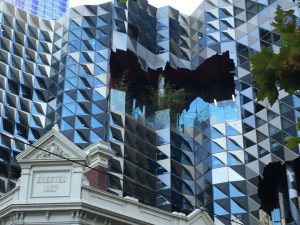
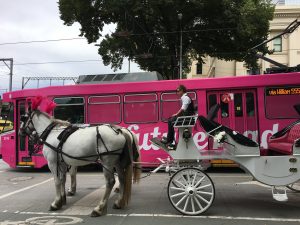
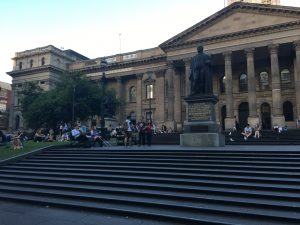
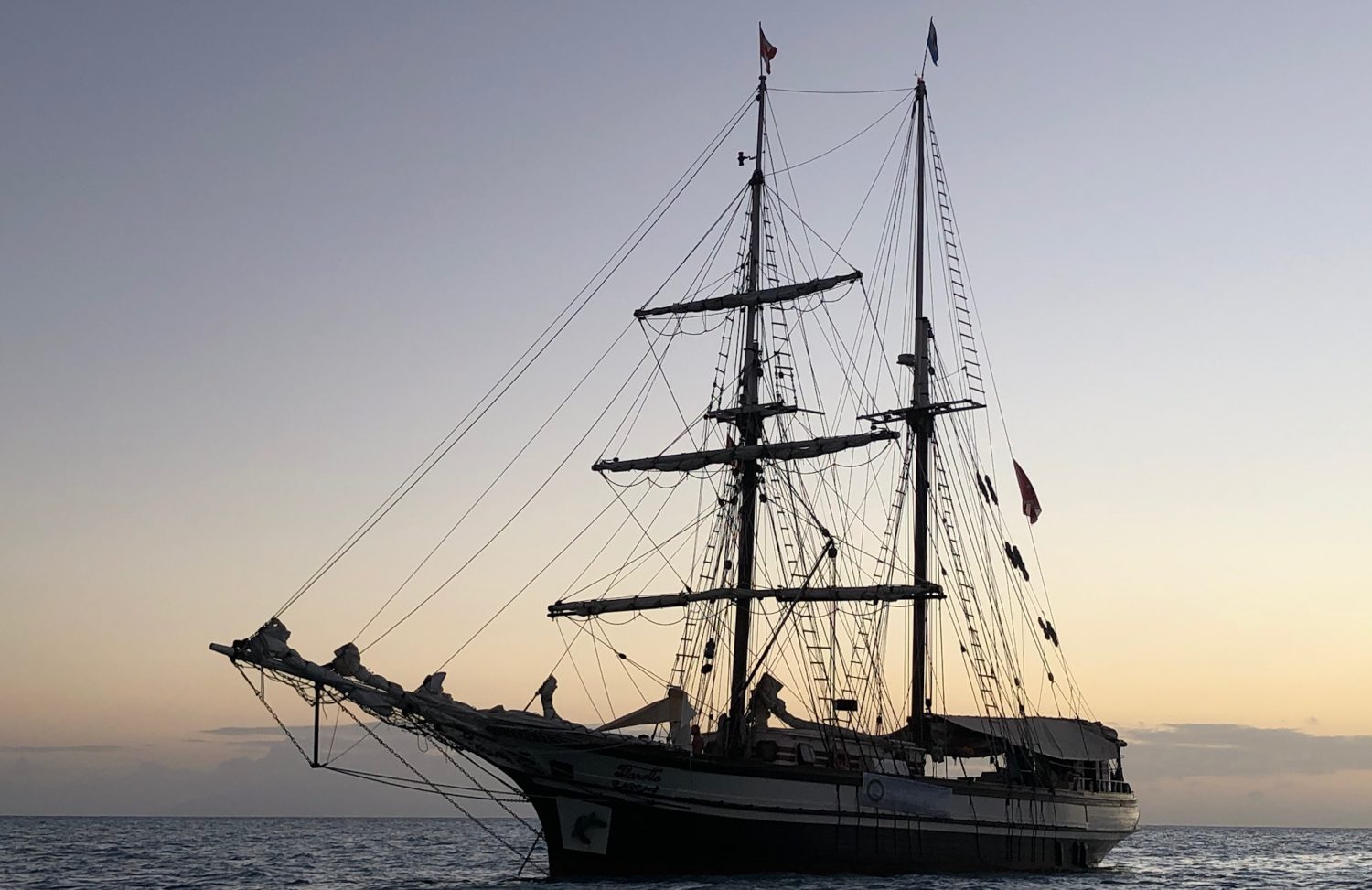
The penguin is my xmas present, right?